For 100 years, Stockmar has been manufacturing products from beeswax. From candles to crayons, to watercolors and modeling beeswax, the entire Waldorf world is familiar with the products made by Stockmar. Its logo is a colorful hexagon with a colorful triangle in the middle. To mark the anniversary, we paid a visit to one of the oldest Anthroposophical companies at their headquarters in Schleswig-Holstein.
Is that the sea breeze you feel when you get off the little train in Kaltenkirchen Süd, just 40 minutes away from Hamburg? The building has a floorplan like a honeycomb and has been standing in the industrial area between the organic wholesale business and the car repair shop since 1982. It’s not big – it’s not a factory, as you might imagine when you know that Stockmar delivers its products to 60 countries worldwide and has an annual turnover of about 4 million euros. Even more incredible is the fact that only 30 employees get all the work done – 19 in production and 11 in administration. It is somehow cozy and moderate in size. My visit is announced in colorful chalk on the display board in the hallway next to the break room so that everyone knows about it and is involved. It also says the third grade class of the Waldorf School in Wandsbek will be visiting next week. Furthermore, it states which employees will receive shares of the fresh vegetable crate this week, which is delivered from the Kattendorf farm. Inke Kruse, who has been the managing director at Stockmar for four and a half years, has her four-month-old daughter with her, as well as her firstborn. The employees are used to it by now. She perceives this balancing act between business management and motherhood as an invitation to a future in which individuals have a sense of how they want to handle things between work and private life. «Neglecting the private person within us is not sustainable. That also applies to managing directors,» says Inke Kruse. For the second time, the company has had an assessment on Economy for the Good Common carried out. These considerations play a specific role in the assessment. Inke Kruse has currently distributed some of her tasks to colleagues. «The majority of my work is building relationships through communication,» she says, and she tries to maintain that aspect despite and while caring for children. She knows each employee by his or her first name and addresses them as such. Salaries are paid out at the beginning of the month. Employees regularly have the opportunity to be creative together. Company outings are organized on a regular basis. For this year’s 100th birthday, which was celebrated amongst 180 friends and partners on the 20th of May, 2022 – on ‹World Bee Day› – the company made a gift to itself, a bee garden. Phacelia, lavender, herbs, and in the center an oloid on a metal base. It is a good addition to the birdhouses, which are filled in winter.
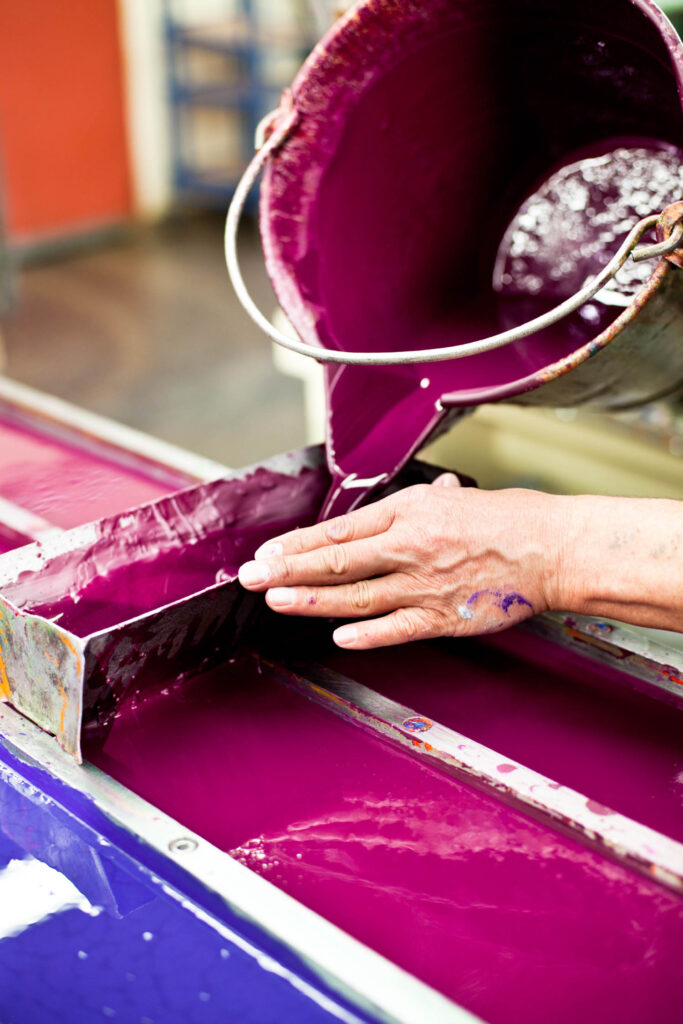
Sense and Sensibility
Every Waldorf school in the world has these wax blocks. Available in 32 different colors. The crayons are also very popular. In Europe, we are familiar with plasticine beeswax for modeling or honeycomb sheets for crafting as well, at least from our children who are in school. The enthusiastic Anthroposophist and founder of the company, Hans Stockmar, opened a wax smelter in Kaltenkirchen in 1922, where candles and honeycomb plates were produced as beekeeping supplies. His son Heimdal provided the decisive impulse for the company’s transformation into the creative products industry in the 1930s. He worked at the Wandsbek Waldorf School and was looking for high-quality creative materials. His brother Anselm, since that time in charge of management, gave the second important impulse that made Stockmar what it is today. In 1979, he removed the company from its private ownership and affiliated it with the Neuguss Management Company. This enabled the company to develop into an independent entity, which all employees serve today. That is how Inke Kruse sees it. When all operating costs such as wages, raw materials, and packaging have been covered, when amounts that the company donates to its own projects each year have been settled, and when employees’ share of profits has been paid out, 100 percent of the rest of profits go to Neuguss. In concrete terms, this means that private enrichment from the company’s profits is not possible for anyone. Neuguss ensures that the business cannot be sold. This provides freedom to work with the ideal of becoming effective for society as a whole. This effectiveness also lies in the quality of the products and in the company’s dealings with its employees and partners, in other words, in the way people work here. Stockmar is a manufactory. Each block of wax passes through several hands. This is a quality feature.

One can possibly sense these many hands, which in turn must be able to feel themselves. Today, the colors yellow, green, white, and silver are being molded into forms. Jan feels the temperature of the machine into which the liquid wax is poured. He tells me that each color pigment reacts differently with the wax and cooling times differ. Each of the seven machines also reacts differently. One needs a little ‹temperature boost› before it can run properly. The other one always jerks a bit. Poured into metal molds and rinsed with cold water, the yellow blocks are still waiting to be removed from their molds, while Jan can already touch the green ones. He identifies which ones have flaws and sorts them out. The good ones are stacked and brought to the packaging department. There are no B-quality goods in the whole cycle, because the ‹B-quality blocks› are melted down again. Looking at the golden ones, it becomes particularly clear what we are dealing with here: liquid gold. They look like small gold bars, but they are the result of human beings refining a natural product. Created between thermal processes, in a manufactory that also tries to make these qualities effective in social and macrosocial interactions. No one can work here that only wants to operate a machine. Your senses are required here. Outside the melting department large tanks in which the wax, the foundation, is permanently kept liquid using heat loops and a swirling oloid, are located. Since this has been operating, the employees in the smelter have noticed that the wax is better, no longer burns so quickly, and is somehow smoother. The company ‹Oloid Solutions› is one of Stockmar Farben’s sister companies, as it is also one of the seven subsidiaries of the Neuguss Group.
Center
The room in which the watercolors are made is located next to the smelter. There, it smells like a Waldorf classroom when the wet-on-wet painting technique is being applied. Olaf, who has been in charge here for 22 years, says the smell comes from the gum arabic, the foundation for liquid colors. Olaf was originally a pastry chef, which is also a profession that requires perceptive skills or people with heart, head, and hand. Does he sometimes gets weary of the colors, just like a worker in a chocolate factory that is no longer able to taste the sweetness? He says no. A few color samples are hanging on the door and wall because they are particularly beautiful, according to Olaf. The luminosity is impressive, considering that they are watercolors. It is a bit of a pity that there are only so few. I would have liked to have seen more of this unintentional beauty. Olaf’s bicycle is parked in front of the door of his ‹paint mixing workshop›. Management has offered an e-bike leasing to all employees, which about one-third of people are taking advantage of.
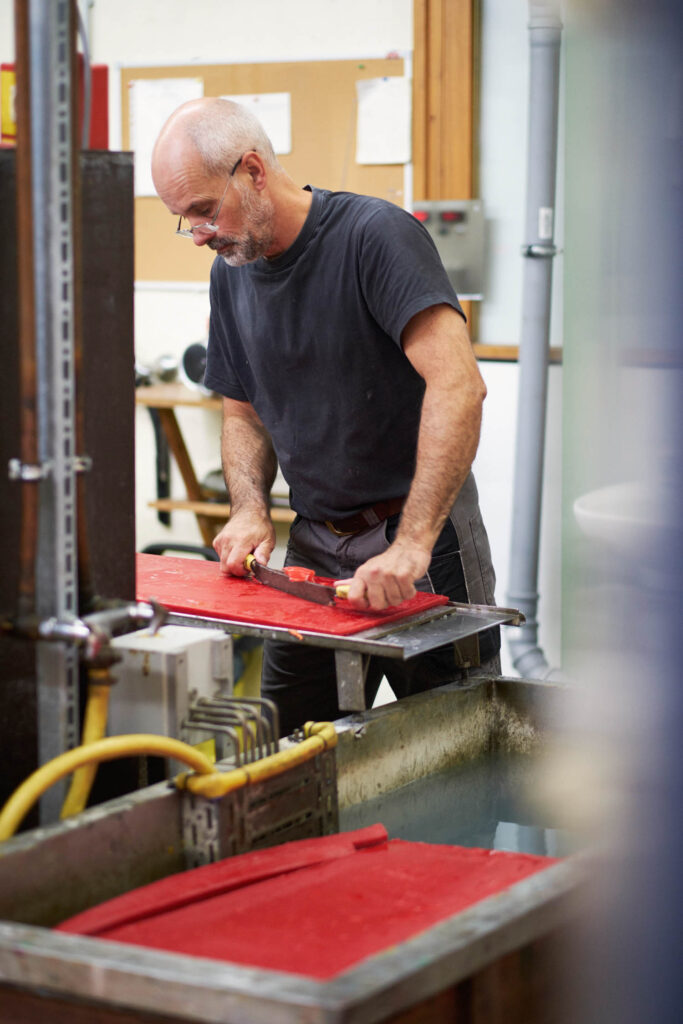
To get to the next unit, you have to cross the center again. The center of the company is the warehouse. It is also not large, and here shelves are filled with products, wax blocks that need to be melted down again, and small bottles of watercolors. Indeed, this is where all paths cross, leading to the restroom, the lunch table, the plant dye lab, and the open space that is used as a meeting room or even a think tank. The women that work in the ‹packaging department› have decorated a branch with wax blocks and hung it in the window. They are wrapping yellow crayons in special paper created for the occasion of ‹100 Years of Stockmar›. The paper stands out because the wax used for it comes from Schleswig Holstein and was collected over a time period of ten years. Apart from that, it is imported from New Zealand. That is where Hans Stockmar established his first apiary. Otherwise, the packaging department organizes the packaging of products at the farms and workshops. In his time, Anselm Stockmar had already begun to establish cooperations with curative communities. The actual packaging takes place there. All products are packaged by eight partner farms.
Through the warehouse, you can also reach the plant dye and shipping unit. Only Germany-wide shipping is organized here. The Dutch partner company Mercurius conducts worldwide shipping of Stockmar products. This company is also a subsidiary of Neuguss.
Future
Stockmar’s product range has been consistent for decades. Sales are rising, even though the last two and a half crisis-ridden years have left their mark. Supply shortages have been and are the main problem. Therefore, the company is especially focusing on purchasing stock, among other things. Some employees also found it difficult that they had to work from home and were no longer in direct contact with each other. The products are high in demand, even outside the Waldorf scene. The company doesn’t have to do any push marketing because word spreads in regard to quality. The wax blocks have become an insider tip for designing flip charts. So where does the path lead? Are there new products that are currently being developed? Since Stockmar produces its paints and blocks primarily for children, the company has to comply with very strict European regulations. CE conformity is a requirement. In concrete terms, this means developing alternatives for all color formulations as a precautionary measure. For example, the ultramarine blue pigment may no longer be used in the children’s product sector. New colors that fit the company’s color wheel are being developed in collaboration with an in-house artist. Two new products, ‹Colors of the World› and the limited ‹Rainbow Edition›, have been released to mark the anniversary. Otherwise, they are aware of what they have achieved and committed to maintaining quality. If more profits are made, more money can flow back into the community because more money is available to Neuguss.
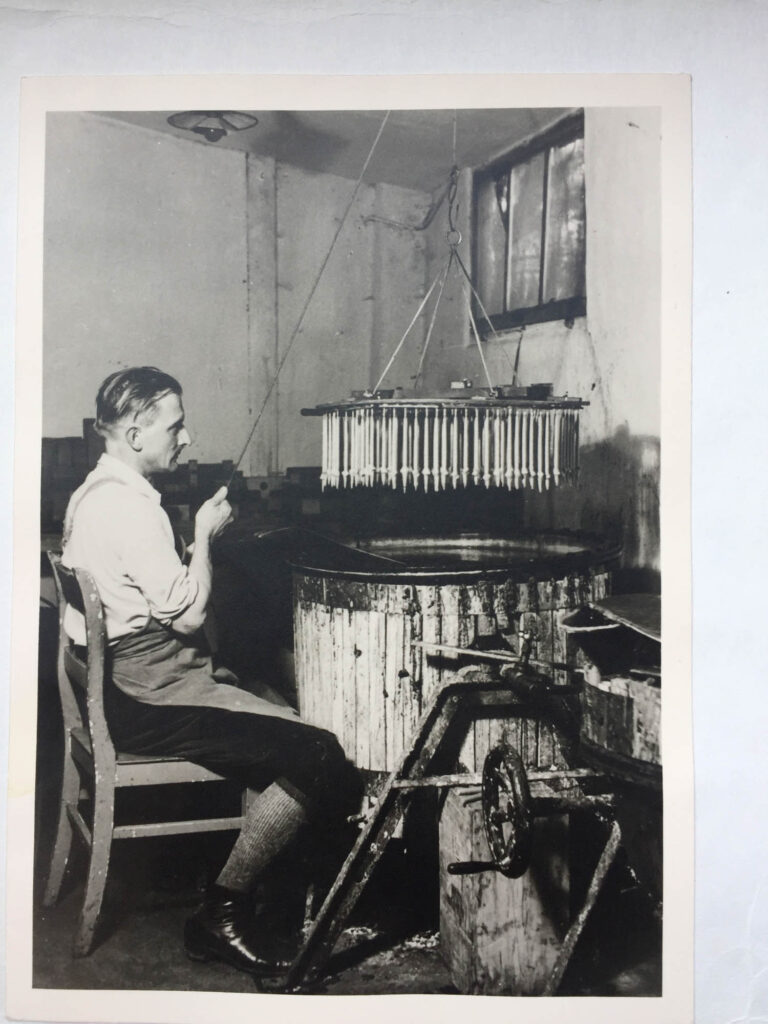
Back in the office of the managing director, who has been nursing her daughter, the question arises as to what aesthetic corporate management actually means – the guiding principle of Neuguss and therefore also of Stockmar. Although there are water prisms on every window sill of the company, which reflect the colors of the rainbow into the rooms, although the walls are colorful, that probably still doesn’t accurately describe it. «We use economic activity to realize an ideal in the world», says Inke Kruse. She, who has worked in other business sectors, finds it very healing to work for a commercial enterprise like Stockmar. By that, she is referring to a kind of humanity that Hans Stockmar had already carried within himself and planted as a seed 100 years ago. He repeatedly sent parcels of food and candles, linen, and clothing to his Jewish co-worker Joseph Gelbart in the Warsaw Ghetto. The Stockmar family is in possession of Gelbart’s letters, who most likely died in Treblinka. After the war, Stockmar held the speech ‹Call for Democratic Reformation› in Kaltenkirchen, in which he clearly stated his position: «Instead of being courageous soldiers, from now on Germans have to display civil courage in every situation.»1 Today, civil courage also means not only thinking about one’s own profits, not only feathering one’s own nest. For an entrepreneur, civil courage means addressing others, in this case, employees, the environment, and the concerns of society as a whole.
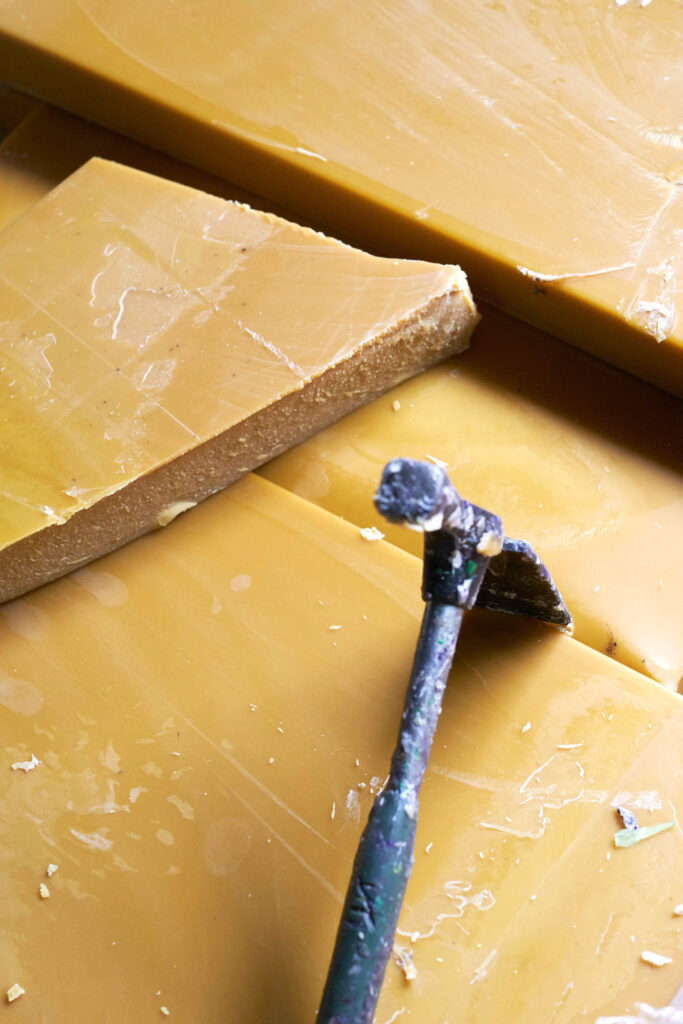
While leaving the building and walking back toward the train station, I no longer see the industrial park in which people have to spend their days in factories. Working in this company seems very enjoyable. It’s like a little world on its own, harboring warmth that doesn’t come from the melting vats, yet has the quality of a beehive. The cool breeze in the garden between flowers and wooden benches used for lunch breaks, the quiet working atmosphere, and the marble sculptures that stand for warmth and cold – two processes that are embedded in the Stockmar company.
Inke Kruse also said that not everything is good just because one pursues an ideal that goes beyond private profit maximization. Everything is a process, also in regard to social aspects. There is tension between ideal and reality that even at Stockmar must be endured and acknowledged. She doesn’t view things through rose-colored glasses. Yet, something very real and concrete exists here that goes beyond our ideas and experiences of a capitalist market economy. In this particular case, the future thereof is also a product of the company Stockmar.
All Photos: © 2022 Hans Stockmar GmbH & Co. kg, Kaltenkirchen.
Translation Simone Ioannou

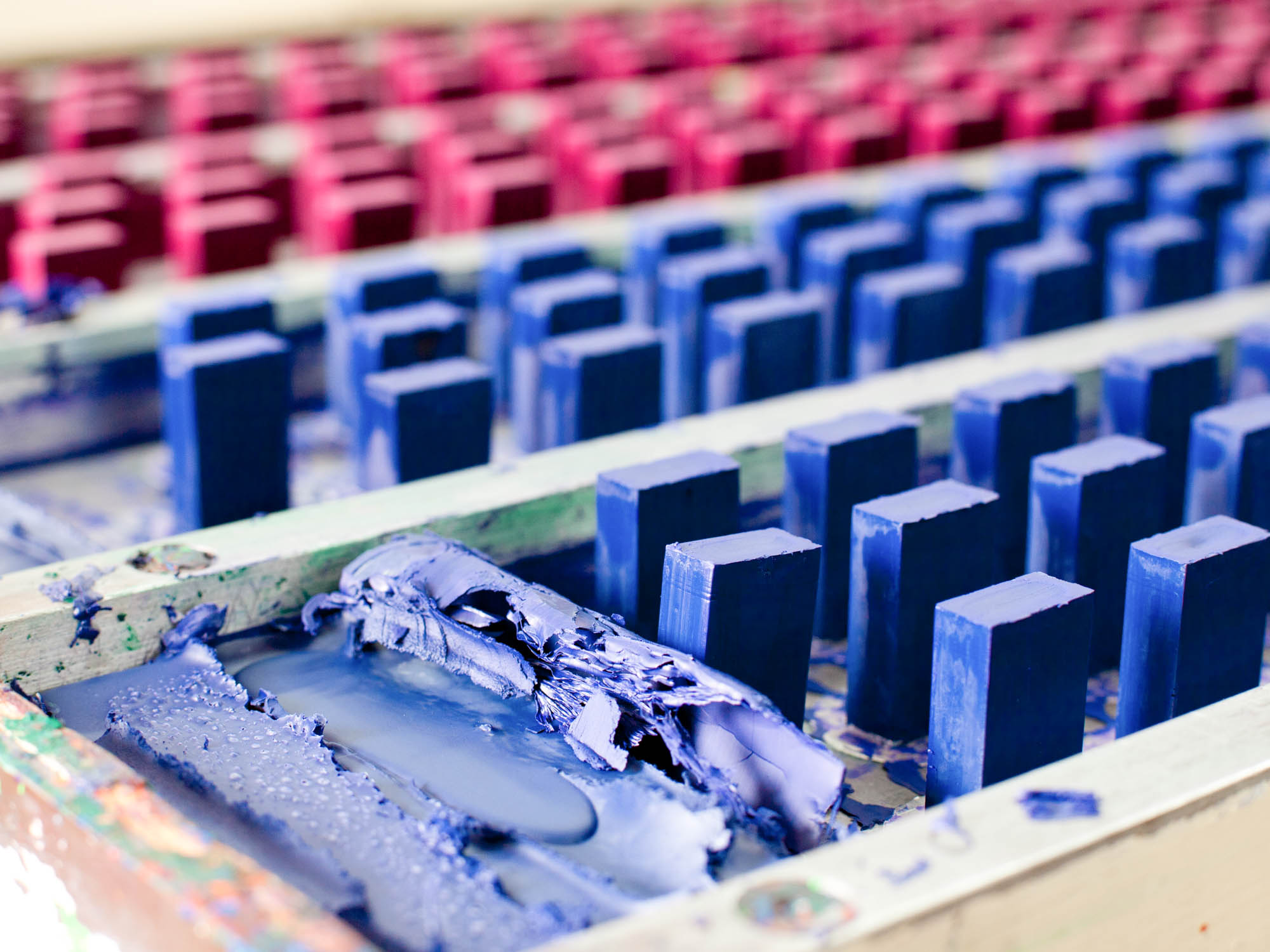









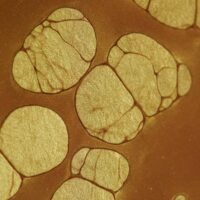


I wonder just how much beeswax is in the Stockmar crayons. They market their product as “beeswax” but I think it is actually a small percent only. any comment?